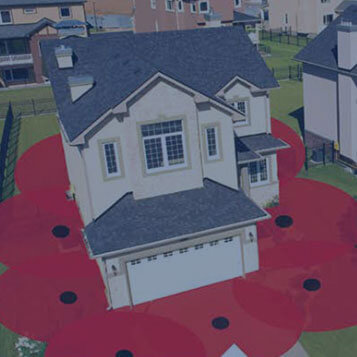Termite Treatment during Winter is an important step toward effective Termite Control. Termite infestations have a devastating impact on residential and commercial buildings. Around the world, these small insects are responsible for property damage worth billions of dollars. Without proper knowledge of termites and their behavioural traits, proper termite treatment and control around the year can be a difficult process.
Many of you may have heard that the risk of termite attack is reduced to some extent during the winter season. However, if you believe that temperature drop makes termites less harmful, you are wrong. The feeding habit of termites remain unchanged throughout the year regardless of temperature.
Unlike other pests that tend to disappear overnight because of cold temperature, termites do not rest on the arrival of winter. This is particularly true of the subterranean termites. Termite Treatment during Winter is important because they continue to feast on our homes round the clock, 365 days a year. They just eat less in winter. Unless appropriate steps are taken to control them, a structure is never protected from potential termite infestations.
Drywood termites are found mostly in the higher areas of a building. On the other hand, subterranean termites tend to attack structures closer to the foundation. Even at extreme levels of temperature, termites continue to forage without a break. However, they remain closer to the nests during the winter. As a result, the damage caused by them remains restricted to a concentrated area.
Winter is probably a more favourable time for undertaking a termite extermination project because this is the time when the location as well behaviour of termites is predicable to some extent. During the summer and spring, the warm temperatures encourage the termites to venture far away from the nests in search of ample supply of food. However, as the weather starts chilling down, termites tend to migrate closer to areas that are warm. As a result, they forage a lot closer to the nest. Another important winter specific behaviour of termites is that they tend to tunnel deeper into the ground during this season.
Termites are relatively easier to spot during the spring and summer seasons as they search for new areas to create nests. In these seasons, termite infestation signs like frass, mud tubes, or discarded wings are found in abundance. These signs are not readily seen during the winter. However, this does not signify that termite activities have slowed down in cooler environments. Therefore, it is important that property owners are not lulled into a false sense of security during the winter season and allow termite populations to grow uninterrupted.
It is true that Termite Treatment during Winter is a little easier during the winter season because of the predictable termite behaviour. If you already have a termite infestation, start your termite control efforts without wasting any time whatsoever. If you don’t have an infestation, winter is a great time to get ready for future infestations by investing in bait stations.
At Exterra, we offer a Termite Treatment during Winter solutions and comprehensive termite baiting systems that create a complete interception zone around your home or office. Most importantly, our bait stations remain effective for all four complete seasons; and for many years. Please contact our experts today to discuss your termite control requirements.

